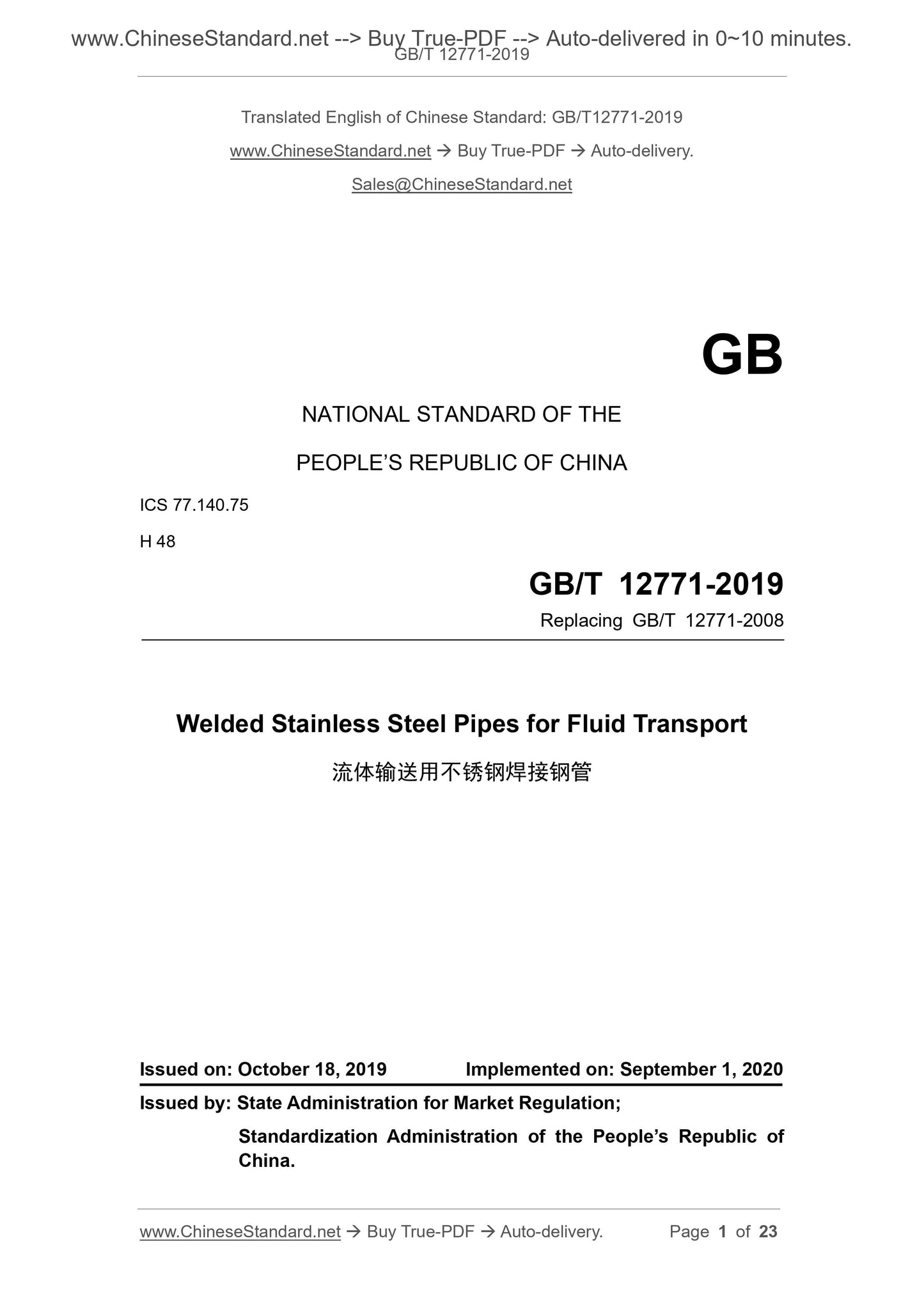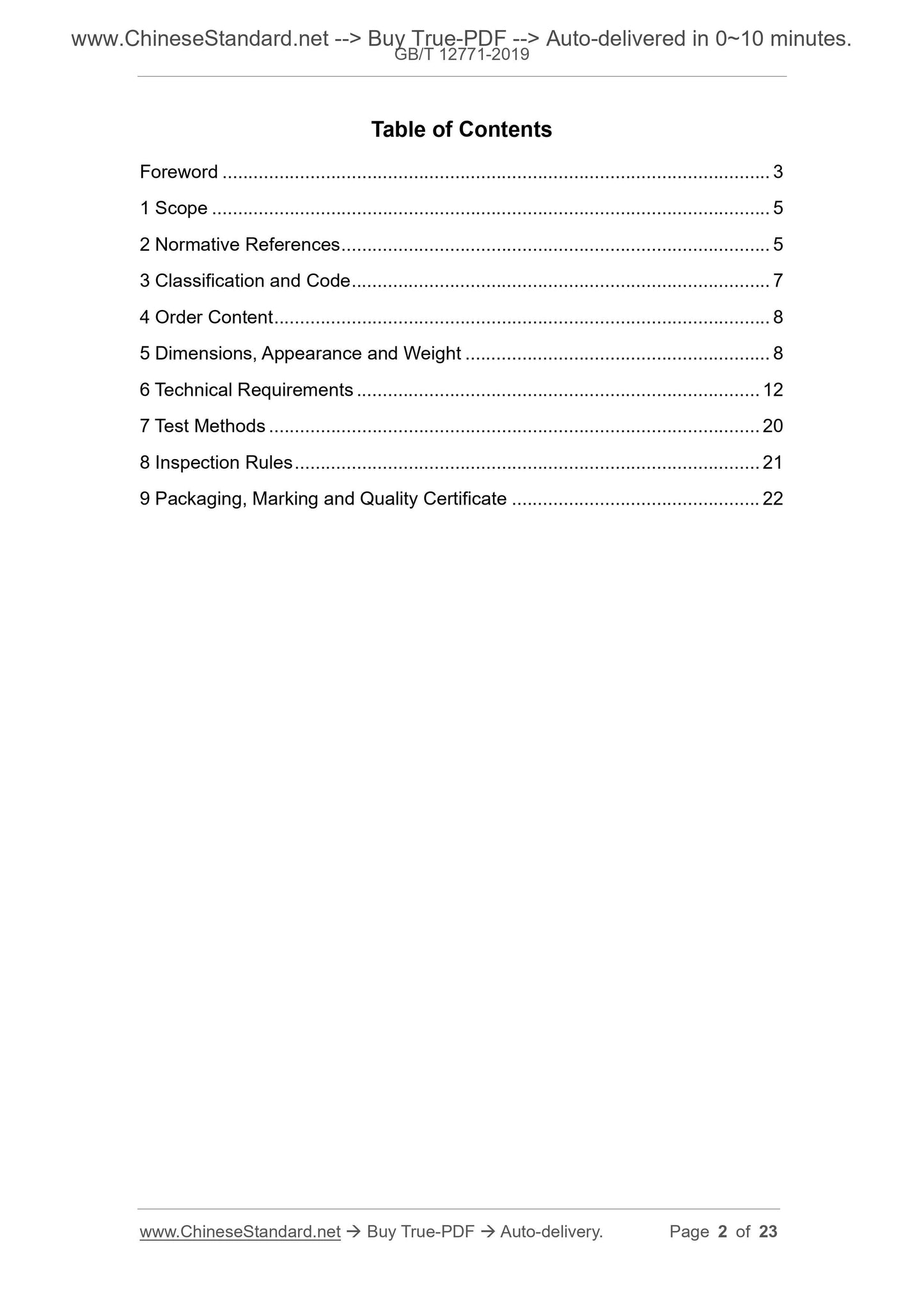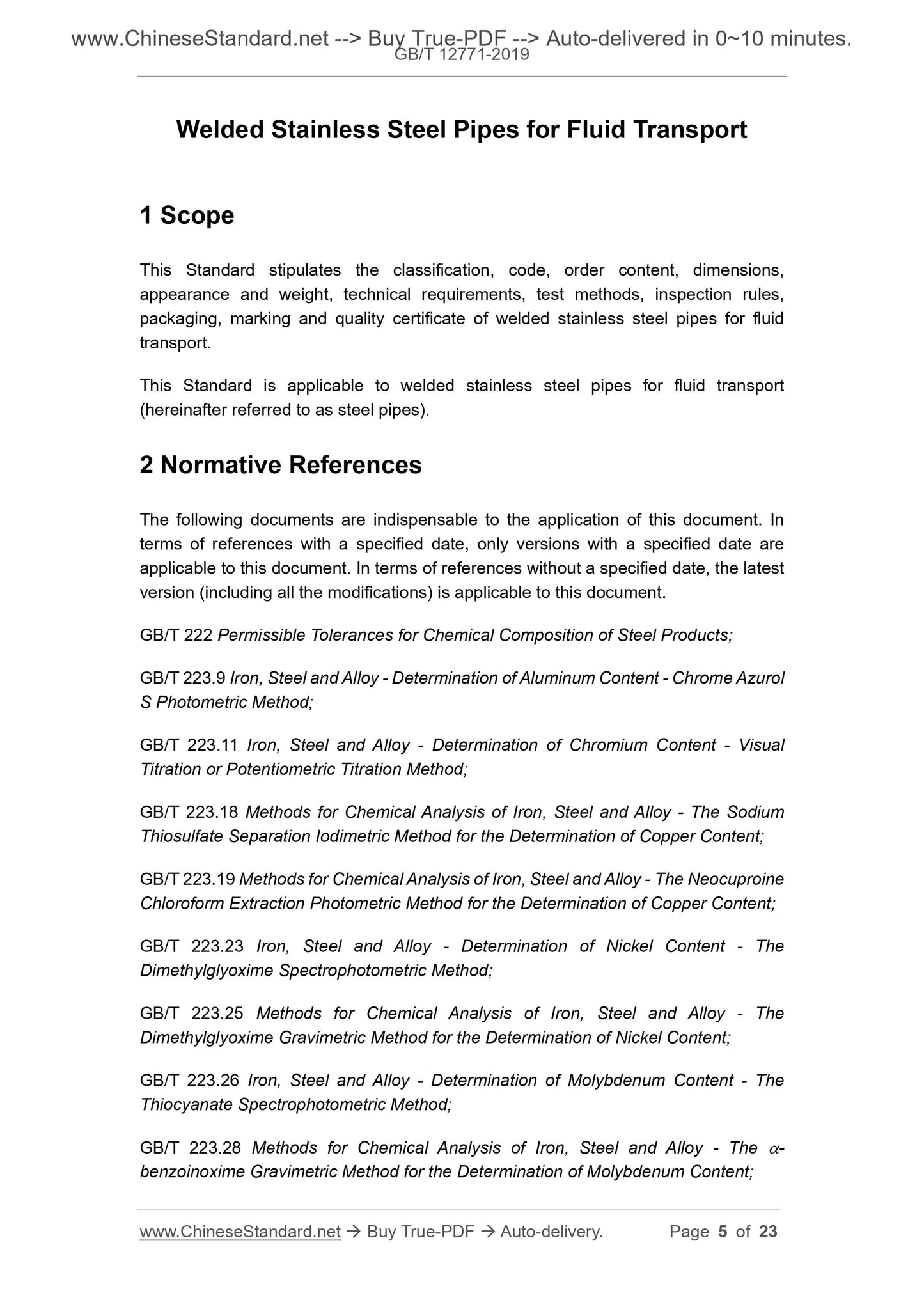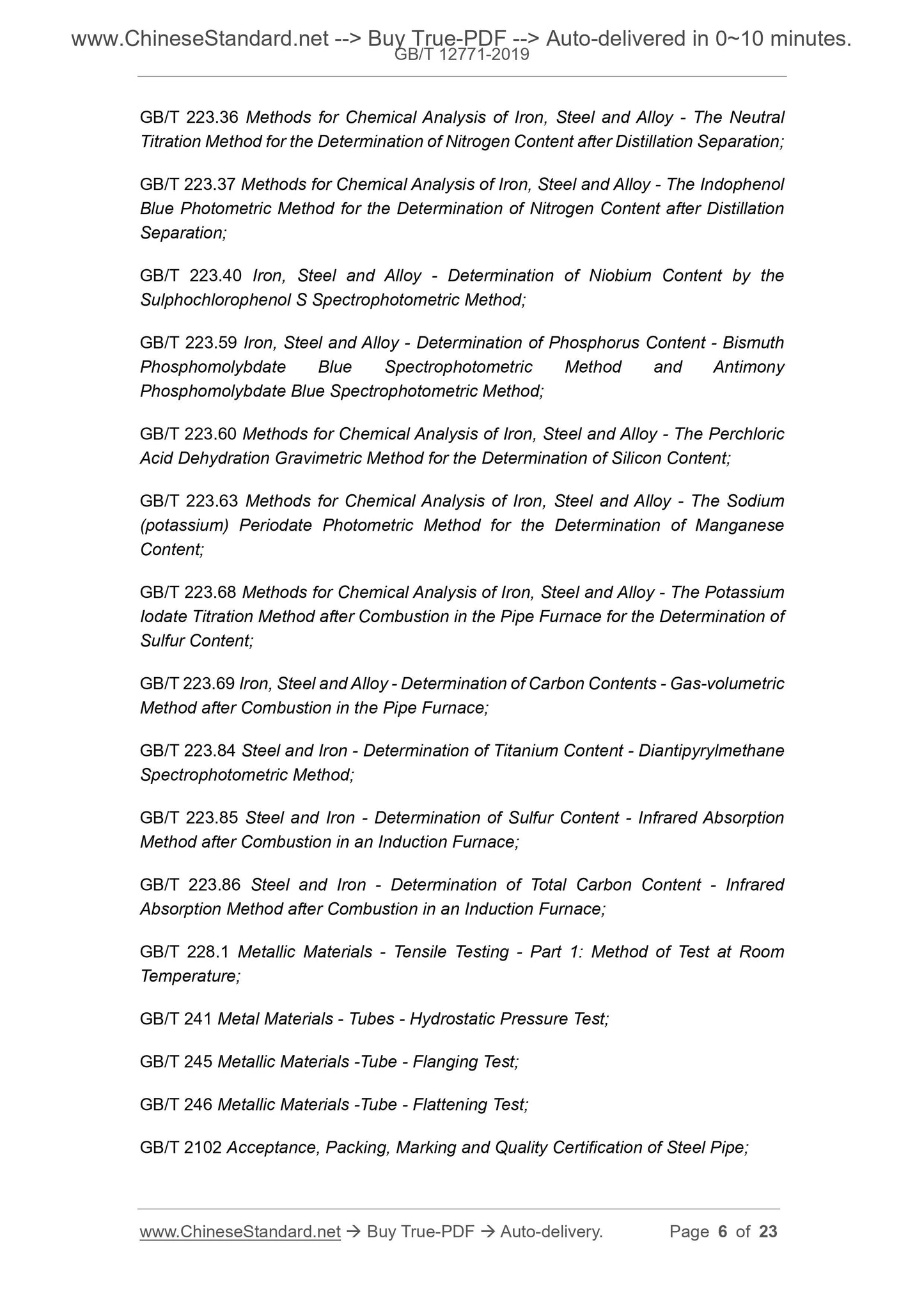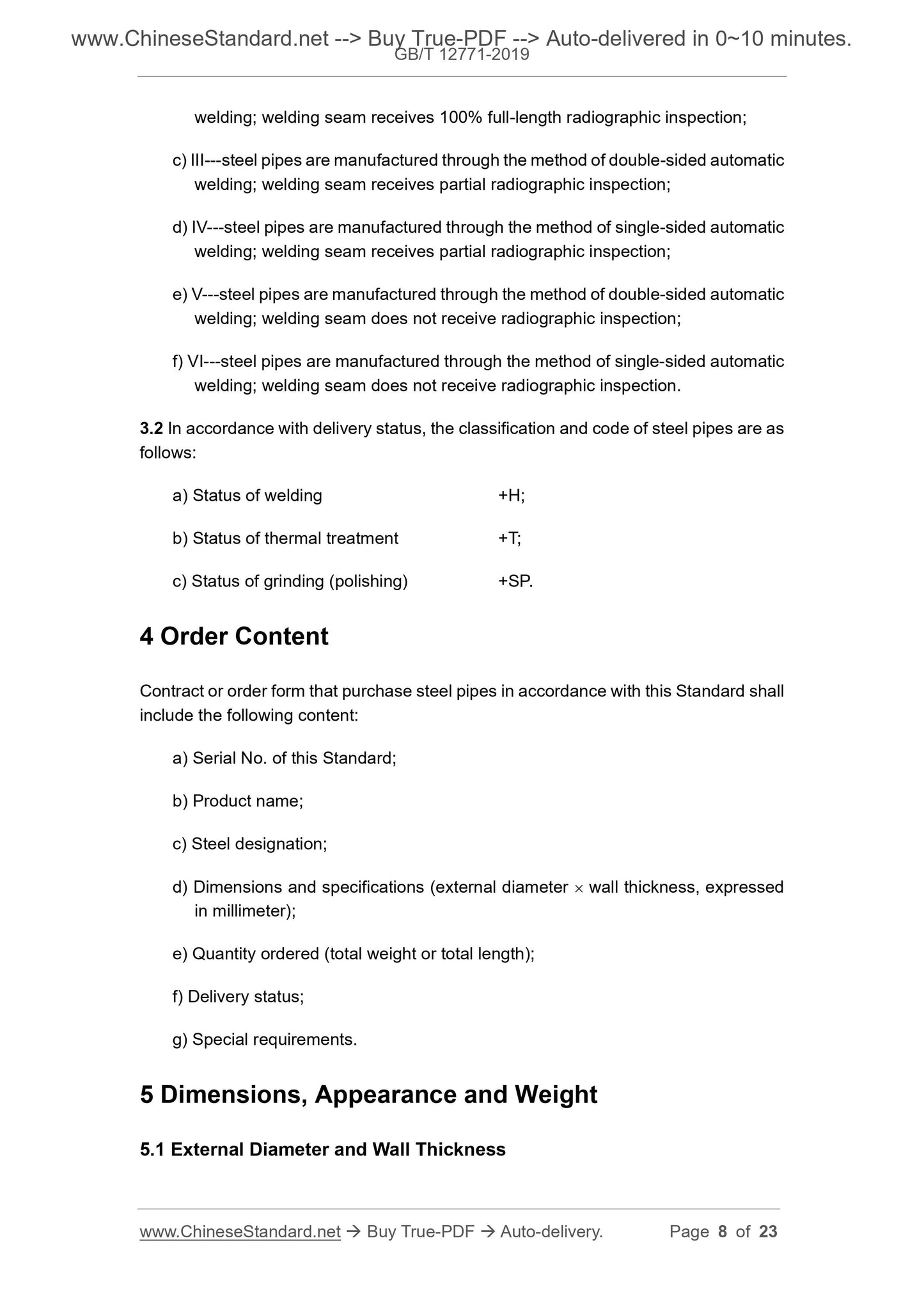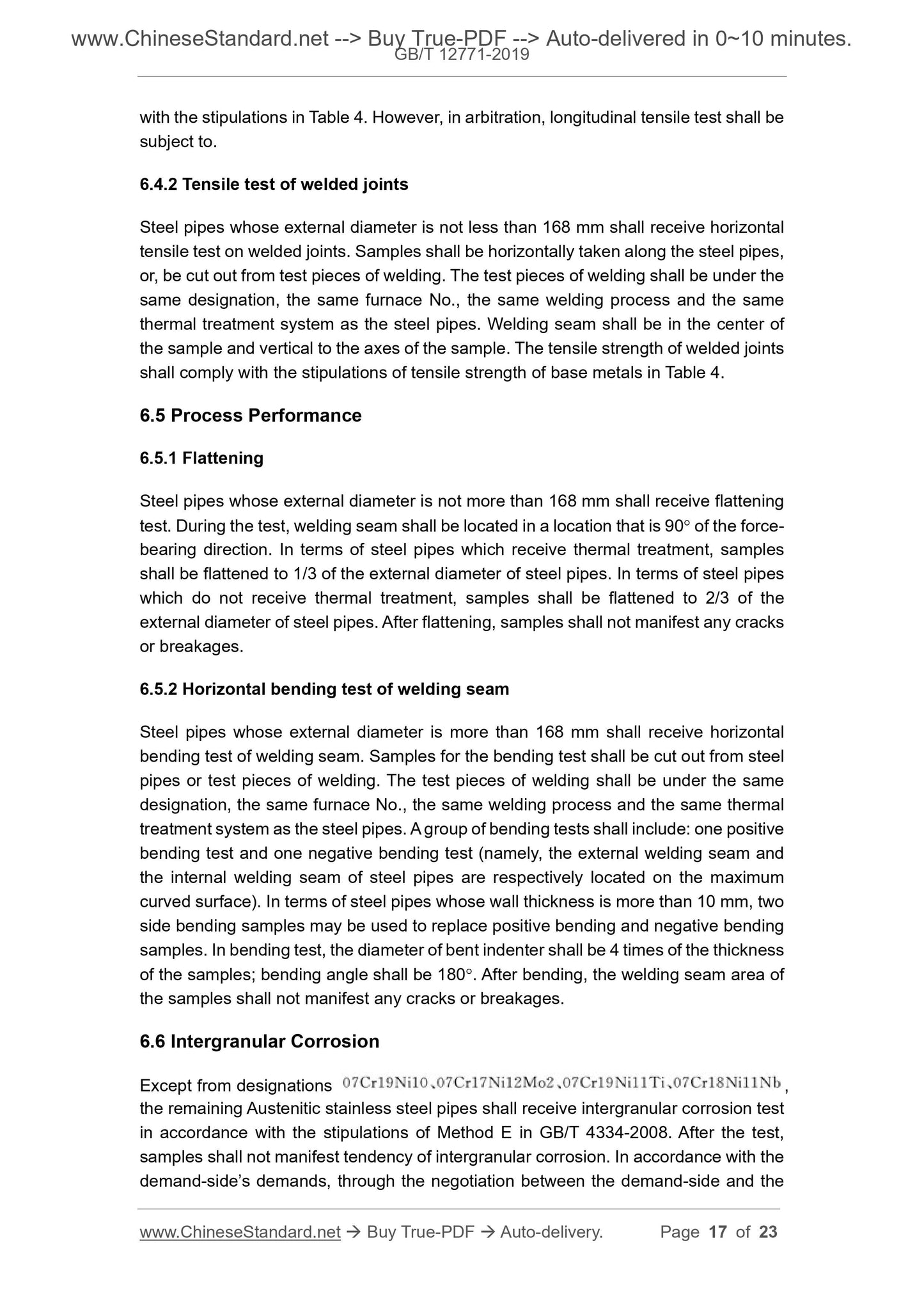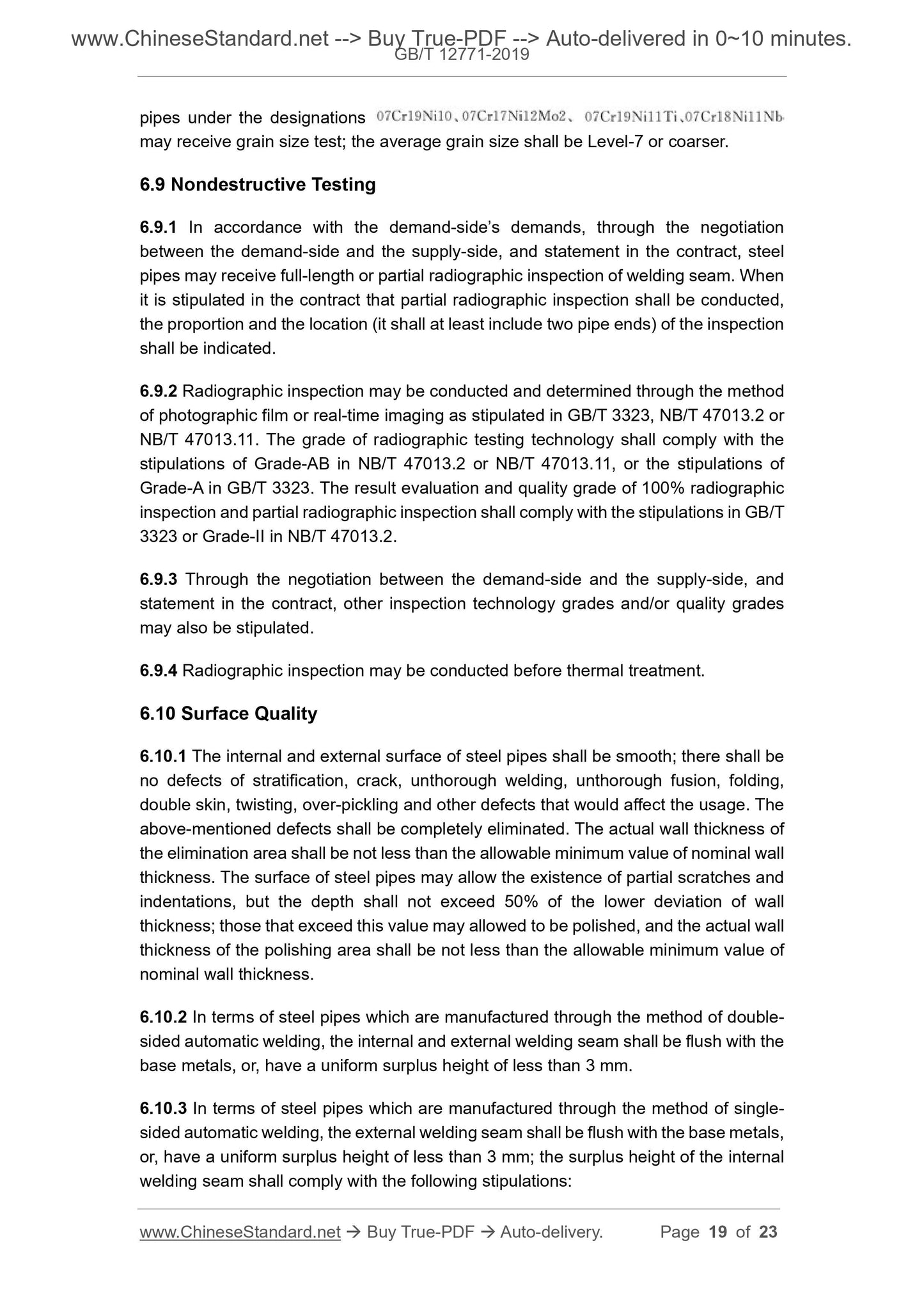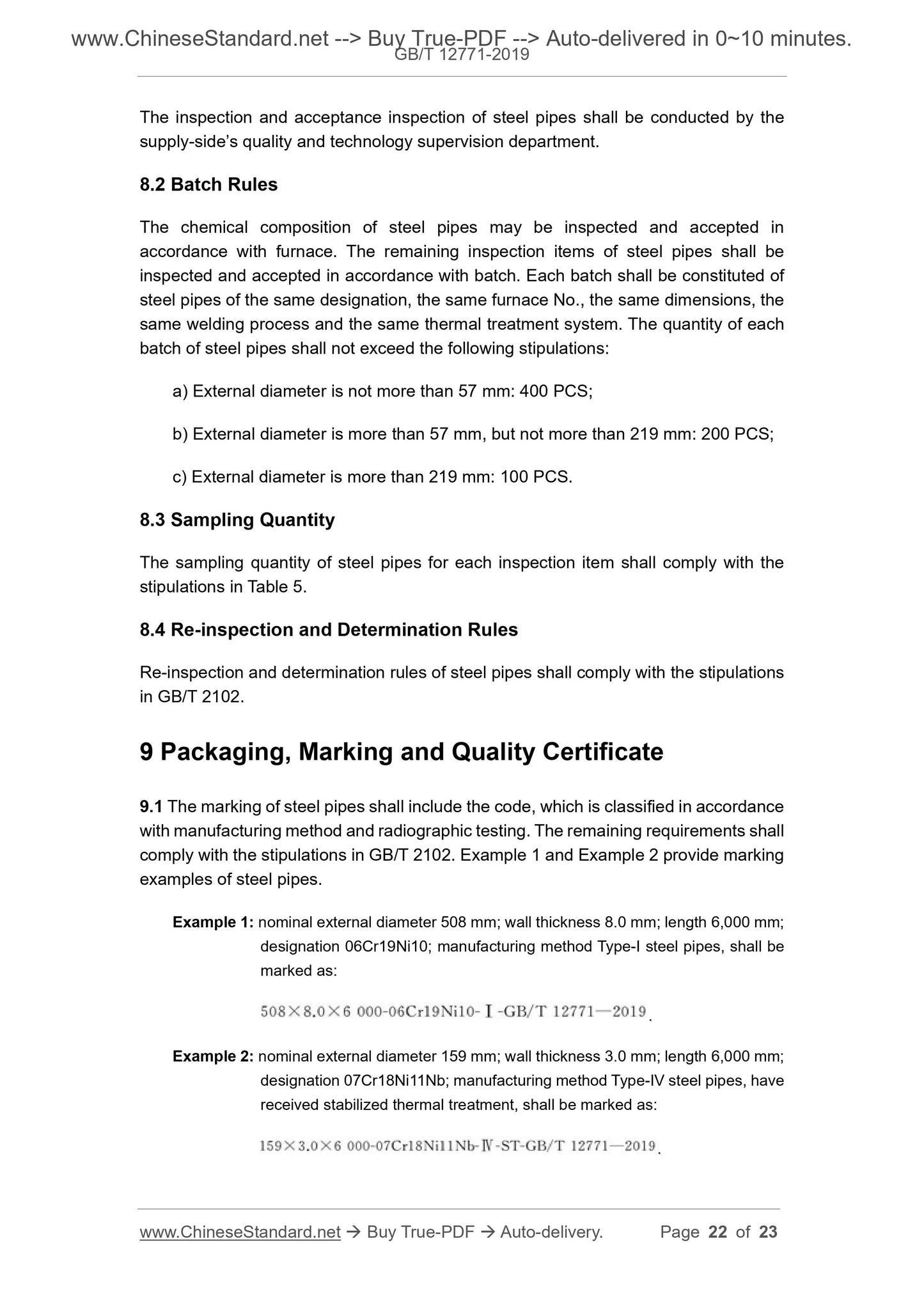1
/
of
8
www.ChineseStandard.us -- Field Test Asia Pte. Ltd.
GB/T 12771-2019 English PDF (GB/T12771-2019)
GB/T 12771-2019 English PDF (GB/T12771-2019)
Regular price
$185.00
Regular price
Sale price
$185.00
Unit price
/
per
Shipping calculated at checkout.
Couldn't load pickup availability
GB/T 12771-2019: Welded Stainless Steel Pipes for Fluid Transport
Delivery: 9 seconds. Download (and Email) true-PDF + Invoice.Get Quotation: Click GB/T 12771-2019 (Self-service in 1-minute)
Newer / historical versions: GB/T 12771-2019
Preview True-PDF
Scope
This Standard stipulates the classification, code, order content, dimensions,appearance and weight, technical requirements, test methods, inspection rules,
packaging, marking and quality certificate of welded stainless steel pipes for fluid
transport.
This Standard is applicable to welded stainless steel pipes for fluid transport
(hereinafter referred to as steel pipes).
Basic Data
| Standard ID | GB/T 12771-2019 (GB/T12771-2019) |
| Description (Translated English) | Welded Stainless Steel Pipes for Fluid Transport |
| Sector / Industry | National Standard (Recommended) |
| Classification of Chinese Standard | H48 |
| Classification of International Standard | 77.140.75 |
| Word Count Estimation | 18,185 |
| Date of Issue | 2019-10-18 |
| Date of Implementation | 2020-09-01 |
| Issuing agency(ies) | State Administration for Market Regulation, China National Standardization Administration |
Share
